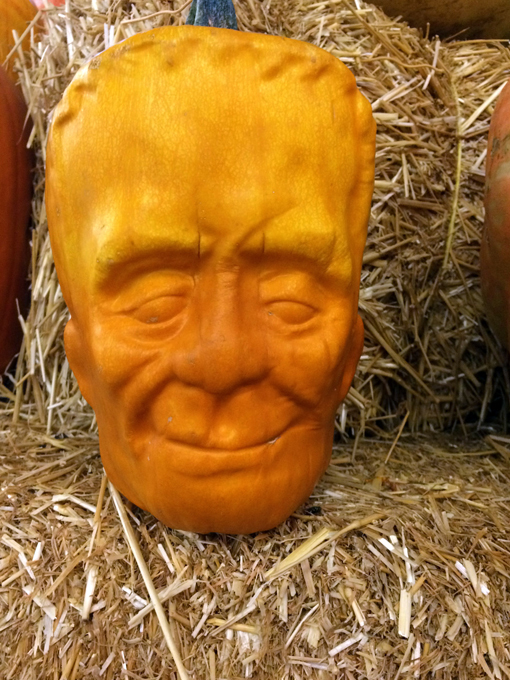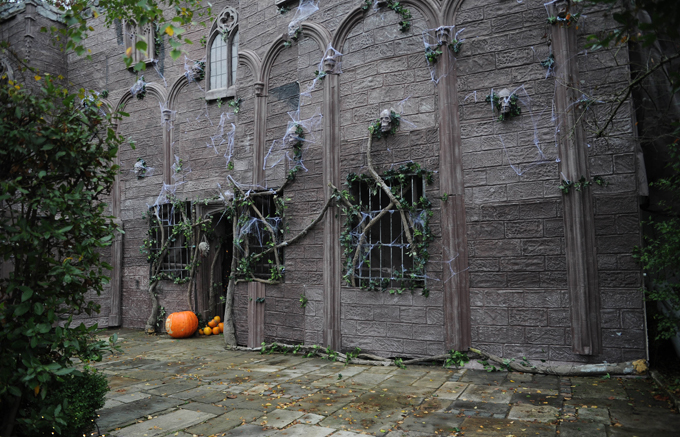Getting trick-or-treating with it

The tradition of going from door to door receiving food already existed in Great Britain and Ireland in the form of "souling", where children and poor people would sing and say prayers for the dead in return for cakes. Children disguised in costumes going from door to door for food and coins—also predates trick or treat, and is recorded in Scotland at Halloween in 1895, where masqueraders in disguise carrying lanterns made out of scooped out turnips, visit homes to be rewarded with cakes, fruit and money. The activity is prevalent in the United States, Canada, the United Kingdom, the Republic of Ireland, Puerto Rico, and northwestern and central Mexico. All photos: Splash/All Over Press

The tradition of going from door to door receiving food already existed in Great Britain and Ireland in the form of "souling", where children and poor people would sing and say prayers for the dead in return for cakes. Children disguised in costumes going from door to door for food and coins—also predates trick or treat, and is recorded in Scotland at Halloween in 1895, where masqueraders in disguise carrying lanterns made out of scooped out turnips, visit homes to be rewarded with cakes, fruit and money. The activity is prevalent in the United States, Canada, the United Kingdom, the Republic of Ireland, Puerto Rico, and northwestern and central Mexico. All photos: Splash/All Over Press

The tradition of going from door to door receiving food already existed in Great Britain and Ireland in the form of "souling", where children and poor people would sing and say prayers for the dead in return for cakes. Children disguised in costumes going from door to door for food and coins—also predates trick or treat, and is recorded in Scotland at Halloween in 1895, where masqueraders in disguise carrying lanterns made out of scooped out turnips, visit homes to be rewarded with cakes, fruit and money. The activity is prevalent in the United States, Canada, the United Kingdom, the Republic of Ireland, Puerto Rico, and northwestern and central Mexico. All photos: Splash/All Over Press

The tradition of going from door to door receiving food already existed in Great Britain and Ireland in the form of "souling", where children and poor people would sing and say prayers for the dead in return for cakes. Children disguised in costumes going from door to door for food and coins—also predates trick or treat, and is recorded in Scotland at Halloween in 1895, where masqueraders in disguise carrying lanterns made out of scooped out turnips, visit homes to be rewarded with cakes, fruit and money. The activity is prevalent in the United States, Canada, the United Kingdom, the Republic of Ireland, Puerto Rico, and northwestern and central Mexico. All photos: Splash/All Over Press

The tradition of going from door to door receiving food already existed in Great Britain and Ireland in the form of "souling", where children and poor people would sing and say prayers for the dead in return for cakes. Children disguised in costumes going from door to door for food and coins—also predates trick or treat, and is recorded in Scotland at Halloween in 1895, where masqueraders in disguise carrying lanterns made out of scooped out turnips, visit homes to be rewarded with cakes, fruit and money. The activity is prevalent in the United States, Canada, the United Kingdom, the Republic of Ireland, Puerto Rico, and northwestern and central Mexico. All photos: Splash/All Over Press

The tradition of going from door to door receiving food already existed in Great Britain and Ireland in the form of "souling", where children and poor people would sing and say prayers for the dead in return for cakes. Children disguised in costumes going from door to door for food and coins—also predates trick or treat, and is recorded in Scotland at Halloween in 1895, where masqueraders in disguise carrying lanterns made out of scooped out turnips, visit homes to be rewarded with cakes, fruit and money. The activity is prevalent in the United States, Canada, the United Kingdom, the Republic of Ireland, Puerto Rico, and northwestern and central Mexico. All photos: Splash/All Over Press

The tradition of going from door to door receiving food already existed in Great Britain and Ireland in the form of "souling", where children and poor people would sing and say prayers for the dead in return for cakes. Children disguised in costumes going from door to door for food and coins—also predates trick or treat, and is recorded in Scotland at Halloween in 1895, where masqueraders in disguise carrying lanterns made out of scooped out turnips, visit homes to be rewarded with cakes, fruit and money. The activity is prevalent in the United States, Canada, the United Kingdom, the Republic of Ireland, Puerto Rico, and northwestern and central Mexico. All photos: Splash/All Over Press

The tradition of going from door to door receiving food already existed in Great Britain and Ireland in the form of "souling", where children and poor people would sing and say prayers for the dead in return for cakes. Children disguised in costumes going from door to door for food and coins—also predates trick or treat, and is recorded in Scotland at Halloween in 1895, where masqueraders in disguise carrying lanterns made out of scooped out turnips, visit homes to be rewarded with cakes, fruit and money. The activity is prevalent in the United States, Canada, the United Kingdom, the Republic of Ireland, Puerto Rico, and northwestern and central Mexico. All photos: Splash/All Over Press



